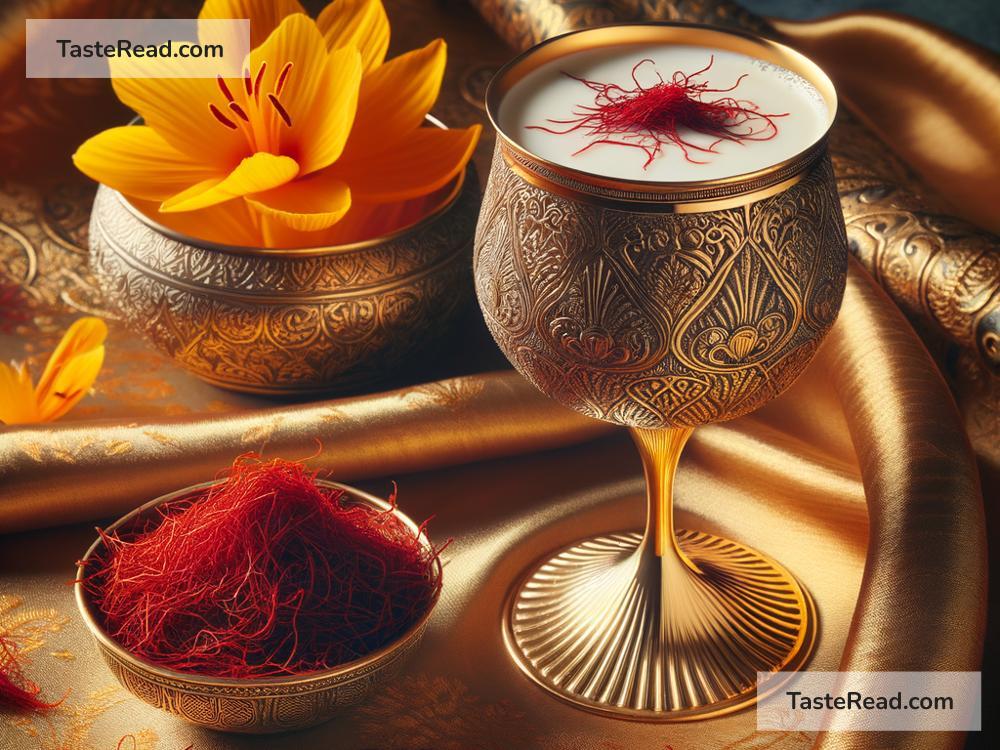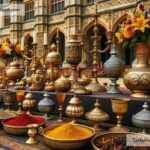How Saffron Became a Symbol of Royalty
For thousands of years, the vibrant red-orange threads of saffron have captured the imagination of people all over the world. This unique spice, made from the dried stigmas of the crocus flower (Crocus sativus), has a long history as a symbol of luxury, power, and royalty. But how did this humble plant become associated with kings, queens, and royalty? Let’s take a closer look at the fascinating journey of saffron and its rise to global fame.
The Origins of Saffron
Saffron has been cultivated for at least 3,000 years, making it one of the oldest spices in human history. Its exact origins are somewhat unclear, but many believe that it was first grown in ancient Persia, which is modern-day Iran. The crocus flower, from which saffron is derived, is delicate and requires specific growing conditions, including warm climates and rich soil. Harvesting saffron is a painstaking process—it takes around 75,000 flowers to produce just one pound of saffron. Because of this, saffron has always been expensive, earning it the nickname “red gold.”
The earliest evidence of saffron being used comes from ancient writings and art. Ancient Persians used saffron for medicinal purposes, to dye cloth, and even as an offering to the gods. Its bright color and remarkable fragrance made it highly sought after, and the people who possessed saffron were considered wealthy or influential.
Saffron in Ancient Royalty and Culture
The association of saffron with royalty begins in ancient civilizations such as Persia, Greece, and India. In Persia, kings and nobility used saffron as a perfume and sprinkled saffron water on their beds and clothing. Its vivid color was also used to dye robes fit for rulers. Ancient Persian art and literature frequently mention saffron as a symbol of prosperity and holiness.
The Greeks and Romans admired saffron equally. In ancient Greece, saffron became associated with the gods and divine beauty. The Greek goddess of dawn, Eos, was often depicted wearing saffron-colored robes. The Romans saw saffron as a luxury fit for emperors. Roman elites used saffron to scent their baths, flavor their food, and even as makeup powder.
In India, saffron also played a special role in royal traditions. Ancient Indian texts from the Vedic period (1500-500 BCE) describe saffron as sacred and precious. Kings adorned their garments with saffron dye to show their status, and its use extended to religious rituals and offerings. Saffron was not just a spice—it became a sacred material tied to both spirituality and royalty.
The Spread of Saffron Across the World
As trade routes opened, saffron spread from Persia to the Mediterranean, Europe, and Asia. The Silk Road, an ancient network of trade routes, carried saffron far and wide, securing its reputation as a treasure. Wherever saffron traveled, it was embraced by royalty and nobility, becoming a staple in elite households.
In medieval Europe, saffron was considered an exotic spice that only the wealthiest people could afford. Kings and queens used it to flavor expensive feasts, and their chefs guarded saffron recipes tightly. It also had medicinal value—saffron was believed to cure stomach issues, improve mood, and even act as an aphrodisiac. European royalty valued saffron so highly that laws were passed to protect its trade. In some cases, stealing saffron was punishable by death, underscoring how valuable it was.
In Asia, saffron continued to represent luxury and power. Chinese emperors used saffron dye for their robes, considering it a color of the divine. Similarly, in India, saffron maintained its sacred importance, becoming closely tied to Buddhism and Hinduism. Robes of saffron were worn by Buddhist monks, symbolizing purity and renunciation, but the color also retained its connection to royalty and leadership.
Why Is Saffron Still Royal Today?
Even today, saffron is one of the most expensive spices in the world. Its association with royalty continues, not just because of its price, but also because of what it represents—luxury, uniqueness, and tradition. Countries like Iran, India, and Spain are some of the largest producers of saffron, and the spice continues to feature prominently in traditional dishes, medicines, and ceremonies.
Saffron’s vibrant color and unique flavor set it apart from other spices. It has become synonymous with refinement and elegance—qualities that are often attributed to royalty. Celebrities, chefs, and even luxury brands use saffron to signify exclusivity and high value. Whether in gourmet cuisine or skincare products, saffron signals sophistication.
Conclusion
Saffron’s journey from a delicate flower to a global symbol of royalty is a testament to its value and allure. Its vibrant color, distinct flavor, and scarcity have made it a prized possession throughout history. From ancient Persian kings and Roman emperors to modern luxury markets, saffron has held a special place in the hearts of royalty and nobility.
The next time you see saffron threads or taste it in a dish, remember its rich history and the centuries of admiration it has garnered. Saffron isn’t just a spice—it’s a story. A story of luxury, power, and the enduring appeal of something truly remarkable.


